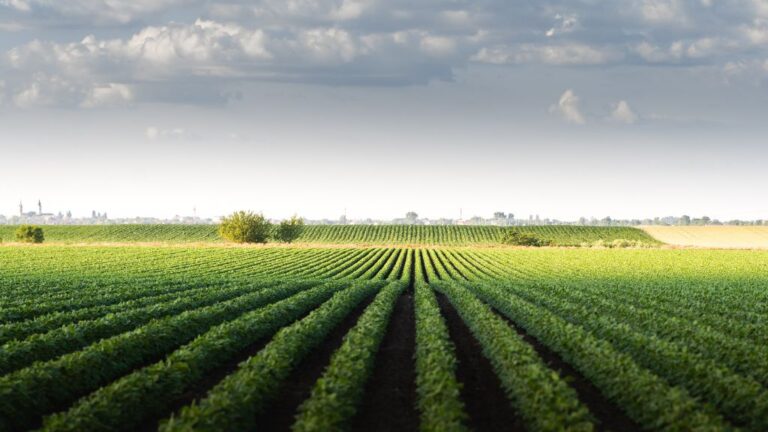Food is far more than something to simply satisfy hunger. It is woven into the fabric of human life and planetary health. Food choices shape identity and allow us to connect with family, friends, and culture through shared meals and food rituals. Community practices related to food reinforce social bonds. Agricultural and culinary traditions link us to history and place.
This nourishment, in its many forms, is steeped in social and cultural symbolism that makes it as much a cornerstone of our identity as it is a key to survival. Every bite, every sip we take, is part of a complex web of interconnections and feedback loops. Our relationship with food transcends the physical—it is an emotional, cultural, and ecological dialogue, a conversation with ourselves, with each other, and with the world we inhabit.

Indeed, to consider food is to delve into a richly interconnected set of processes and outcomes that is as fascinating as it is vital, and as problematic as it is promising.
Food drives human health and wellbeing, but it also causes some of our biggest problems
While food can be a source of pleasure and nourishment, our food choices, shaped by a modern food environment that often values convenience over nutrition, can paradoxically harm more than preserve our health.
Unhealthy diets, full of highly processed, energy-dense foods, contribute to non-communicable diseases (NCDs) including cancer, heart disease, stroke, and diabetes. Most adults in the UK are overweight. Almost one in three of these people is obese. In high-income countries overall, around two-thirds of adults are overweight or obese – risk factors for NCDs.
What we eat also affects our mental health. Increasingly, the evidence shows that poor diets have a negative effect on this aspect of our well-being, too. Together, diet-related ill health costs UK society billions every year – and is estimated to reach nearly £50 billion per year by 2050. In the US, unhealthy diets linked to heart disease, stroke and type 2 diabetes alone are already estimated to cost $50 billion per year.
These health risks are more prevalent among low-income populations. A recent estimate suggests that the poorest UK households would need to spend as much as 50% of earnings on food to eat a healthy diet consistent with government recommendations compared to just 11% for those with the highest incomes. Food poverty is thus closely linked to rising inequality.
Food production, consumption, and disposal are having devastating effects on the natural world as well. The agri-food sector is the primary driver of biodiversity loss and accounts for up to 30% of greenhouse gas emissions worldwide. Environmental health, in turn, has a significant impact on both physical and mental health.
Balancing diet-related health concerns, social inequality, and environmental sustainability considerations is thus a complex, yet crucial issue.
Food-related problems are linked and depend on each other
As this illustration shows, the challenges we face connected to food are not independent of each other. Rather, they are interconnected, and in many ways, interdependent, with changes in one area having a direct impact on others.
This is already evident in terms of how changing climate conditions are affecting agricultural production, including cropping frequency and crop yield. We’ve also recently seen how rising energy costs impact food availability. There is mounting evidence of the increasing costs and other pressures on healthcare systems due to diet-related diseases.
This means that dealing with any single food-related problem alone can have serious implications for others. Meat production is a good example.
On one hand, we’ve managed incredible efficiency to meet the increasing demand for meat while keeping prices low. But this has come at a great cost, with meat production contributing significantly to climate change through the direct release of greenhouse gas emissions, and through deforestation, both to make space for grazing animals and produce animal feed.
Deforestation in turn contributes to biodiversity loss, alongside pollution from animal waste. The more animal products we consume, the greater the environmental toll. Industrial livestock farming also raises animal welfare concerns. And a drive to produce more meat to address rising demand has implications for our health, as we’ve largely ignored the increased risks that a meat-rich diet brings for our health (particularly red meat and processed meat products), for example, in terms of heart disease, diabetes and multiple forms of cancer.
For these reasons, food must be regarded as a ‘system’
Understanding food as a complex, multifaceted issue requires us to step back and consider the whole picture, rather than isolating individual elements. This shift towards a holistic perspective is gaining recognition among researchers, policymakers, industry, and civil society. One way to do this is to take a systems-based approach to food.
A food system involves numerous interconnected elements, each contributing towards a common goal or purpose. This complex network of interactions has the potential to produce outcomes beyond the capabilities of any individual part. This interdependence is the essence of a systems approach, where the focus is not solely on each component but on how they work together to impact the system as a whole.
Take food security as an example. Defined as reliable access for all people to sufficient, safe and nutritious food that both meets dietary needs and preferences, food security hinges on the successful interaction of numerous elements spanning agricultural production, food processing, transportation, and consumption patterns. All of these aspects of the food system are influenced by and contribute to stressors such as population growth, income inequality, climate change, and rising demand for animal-based foods, all of which interact to impact on food security.
The interplay of these components can lead to systemic challenges that are not immediately evident when focusing on individual elements. For instance, high levels of food production do not necessarily equate to food security. During the Covid pandemic, issues with transportation led to temporary food shortages in supermarkets, despite ample production. Similarly, geopolitical tensions, such as Russia’s obstruction of ports around Ukraine and the subsequent disruption of wheat and maize shipments, illustrate how delicately balanced the system is. This disruption has raised food prices globally and sparked concerns about potential shortages of staple foods.
In essence, food security is not just about producing enough food. It’s about ensuring that all the different parts of the system work together effectively and sustainably. The complexity of this delicate balance of numerous interdependent components underscores the importance of adopting a systems approach to food, allowing us to address the challenges in a holistic and integrated manner.
What is a food system?
A food system, stated simply and elegantly, is the ‘sum of all of the elements that combine to produce, process, market and sell the food we eat’. There are many food systems, and many systems operating within any given food system.
While the complexity of food systems can seem daunting, the focus should not be on attempting to understand and unravel every intricate detail. Instead, we can ask ourselves: what are the noticeable impacts of our current approach to food? By examining the interconnections and interactions between different parts of the system, we can make more informed decisions about what needs altering and how best to accomplish this. For instance, understanding how transportation challenges can disrupt food availability, despite high production levels, can help us better anticipate these issues, and guide improvements in logistics and infrastructure.
By adopting a food systems approach, we ensure that we consider trade-offs explicitly and minimize the risk of actions taken in one area inadvertently worsening problems in another. In other words, this approach promotes a more balanced and comprehensive strategy to address the multifaceted issues tied to our food systems.
What does a food systems approach look like?
A food systems approach calls for multiple, collective efforts from a diverse range of participants. It requires both small and large-scale changes that redefine our relationship with food, for the betterment of people, animals and the planet. But what does that look like?
Farmers, at the frontline of this transformation, can embrace eco-friendly farming practices and cultivate crop diversity that aligns with local ecosystems. They can engage directly with consumers to minimize environmental impact and diversify income streams.
Food manufacturers can better prioritize sustainable and fair sourcing, scrutinizing their carbon footprint and waste. Innovation – and common sense – can support the development of nutritious and affordable products that are transparent about their ingredients and sources, and with less processing.
Retailers can leverage their influence to offer fairer prices to producers, champion healthier choices and reduce food waste. This includes through better stock management, creative marketing of ‘imperfect’ produce, and eco-friendly packaging.
Together with producers, manufacturers and retailers can collaborate better across supply chains to forecast demand, reduce waste, and improve efficiency from farm to shelf using shared data.
Consumers are central to a food systems approach. Mindful dietary choices and purchasing habits can make a big difference. Embracing more plant-based diets, local produce, and efficient meal planning could substantially lower environmental footprints and reduce waste. Participation in local food systems, such as community-supported agriculture or urban gardens, encourages sustainability.
But consumer choice alone can’t bear the burden of change. The food system is full of counterproductive incentives and must fundamentally change in order to support consumers on their path towards sustainability. The system, drawing together all of its stakeholders must support consumers on this journey.
This includes researchers, offering evidence-based insights on the social, economic, and environmental impacts of different food practices. Interdisciplinary research could help stakeholders understand food systems’ complex interactions.
Policymakers, working with food system stakeholders, must design and enforce policies that promote sustainability, healthy diets, and fair labour practices. They can help consumers make healthier, more sustainable food choices through advertising restrictions and public procurement in schools, hospitals, and prisons.
From field to fork and beyond, a systems approach is not just a method—it’s a mindset. It champions a collective movement across all sectors, from farmers to policymakers. We may not have all the answers, but we know we have to act. A food systems approach guides us towards a more sustainable, equitable, and healthy food future.
I write about the future of food and the connections between our food systems, the environment and public health. Sign up for my newsletter.
You can also read more here.






